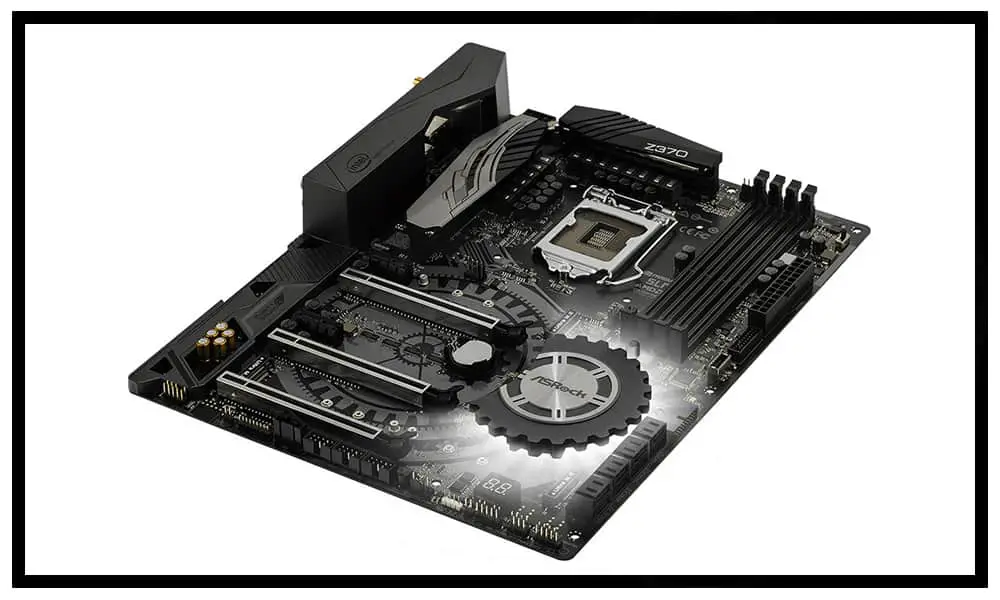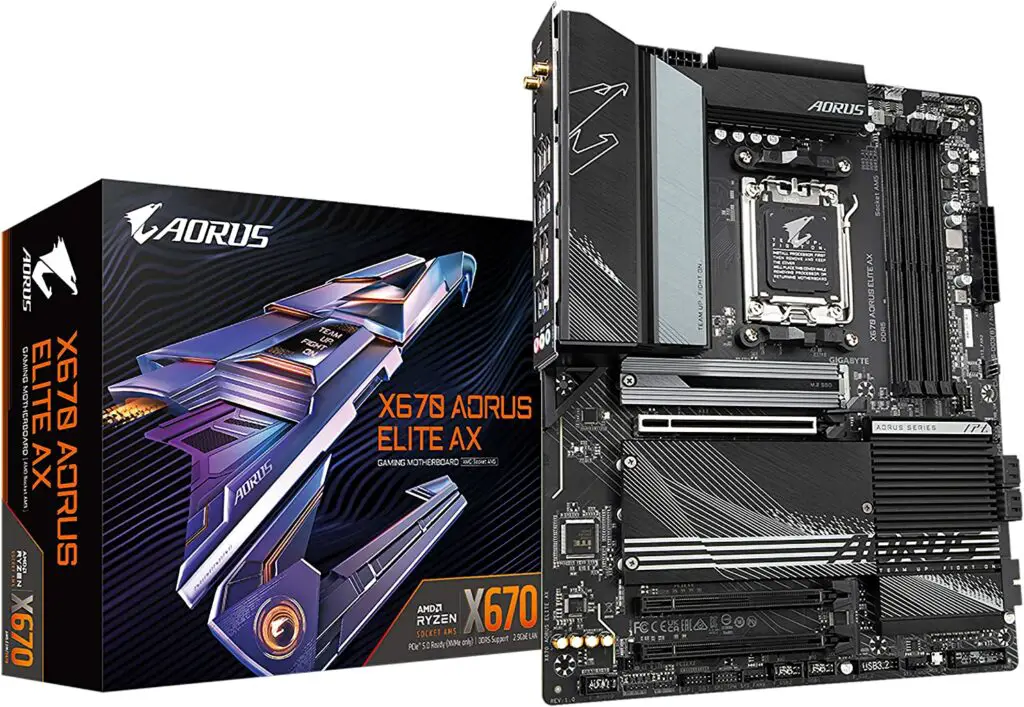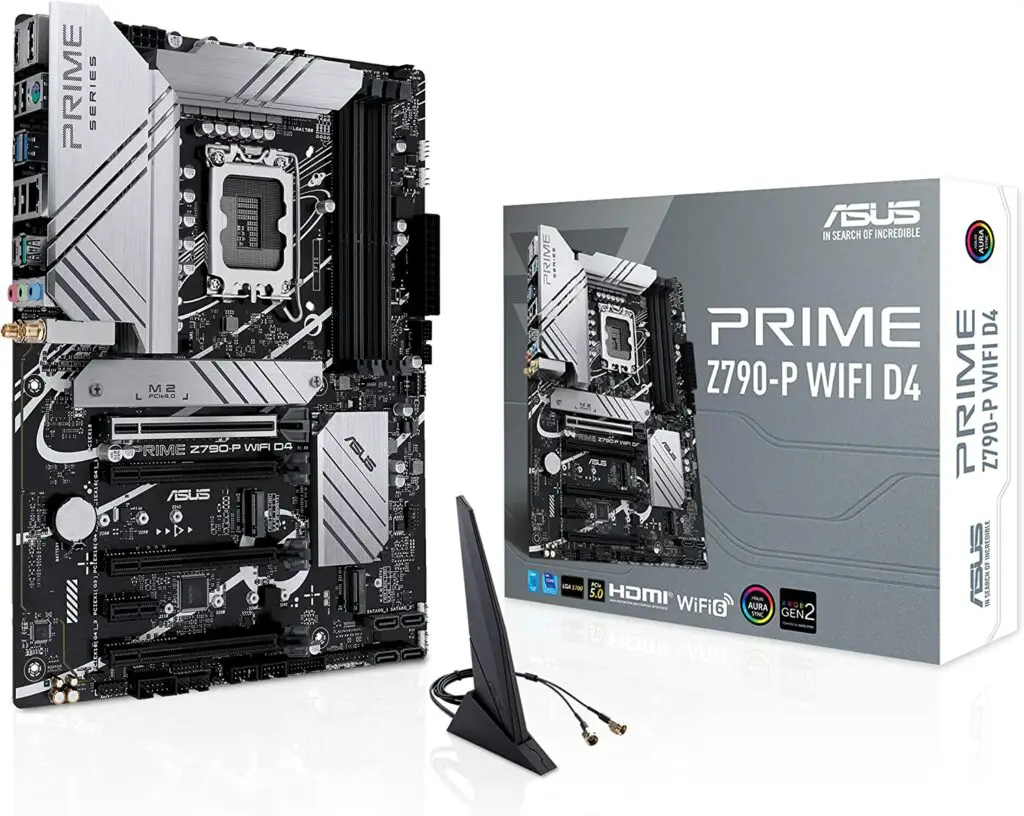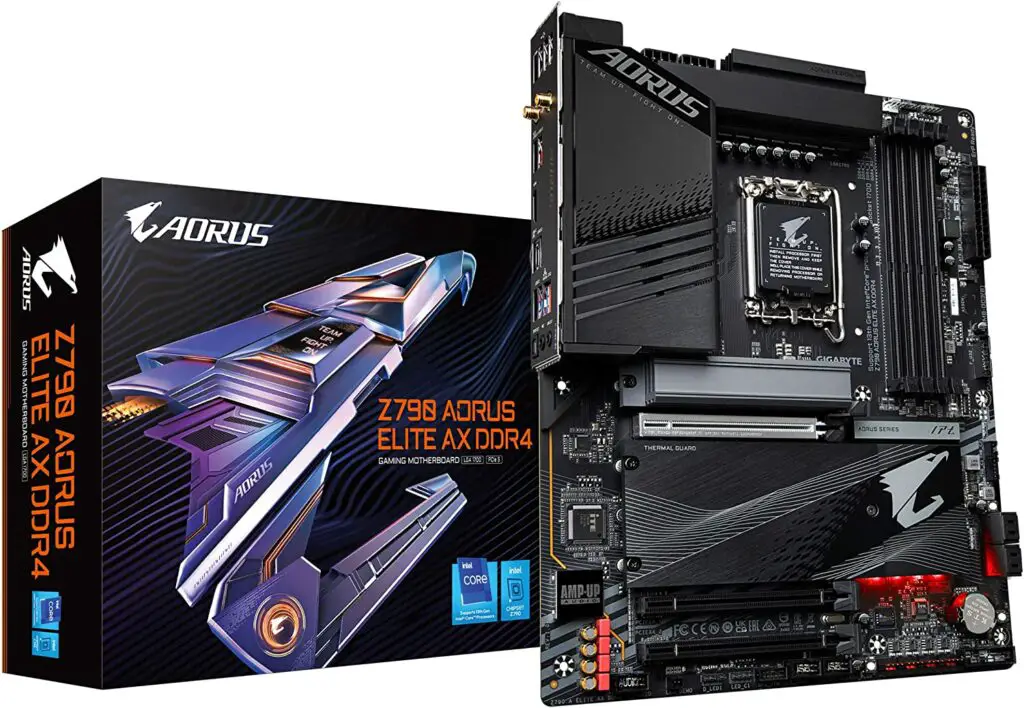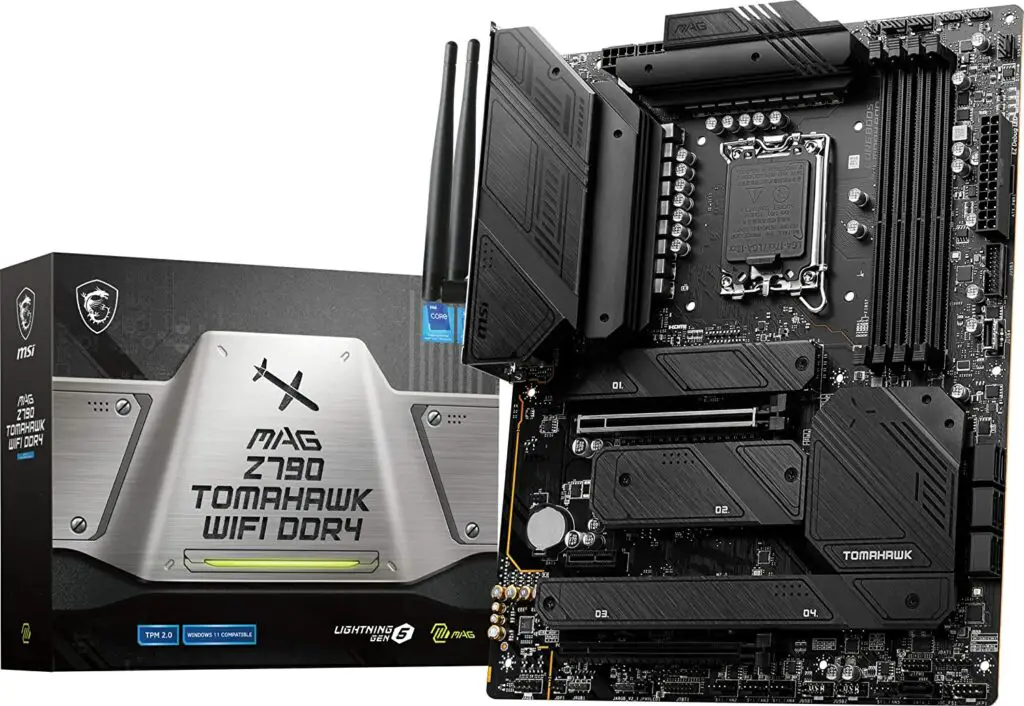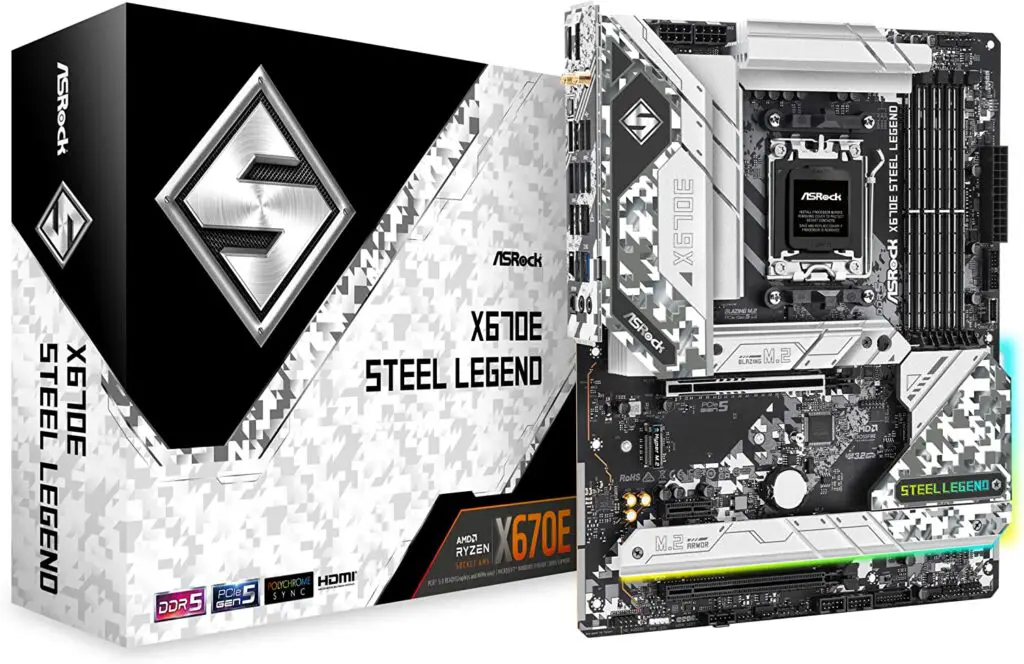Our experts has compiled a list of the best motherboards for VR. The list includes motherboards from top brands such as ASUS, Gigabyte, and MSI, with a range of features and capabilities to suit different needs and budgets.
Virtual Reality (VR) has become a popular technology for gaming and entertainment, and to experience VR to its full potential, you need a powerful computer system that includes a motherboard capable of handling the demands of VR. The right motherboard can make a huge difference in the performance of your VR experience, as it plays a key role in managing data transfer, power delivery, and other critical functions.
One of the top recommendations on the list is the GIGABYTE X670 AORUS Elite AX, which features robust power delivery and overclocking capabilities, along with advanced cooling options to help maintain optimal performance during extended VR sessions. Another top pick is the MSI PRO X670-P WiFi ProSeries, which offers fast connectivity options, multiple PCIe 4.0 slots, and advanced RGB lighting controls.
Other motherboards on the list include the ASUS Prime Z790-P WiFi D4, which offers a good balance of features and affordability, and the GIGABYTE Z790 AORUS Elite AX, which features military-grade components and enhanced cooling options for stable and reliable performance.
When choosing a motherboard for VR, it’s important to consider factors such as compatibility with your CPU, RAM, and other components, as well as the number and type of PCIe slots, USB ports, and other connectivity options. You should also consider the motherboard’s power delivery and cooling capabilities, as these will affect the stability and performance of your system.
Also See: Best Laptops for VR
Our recommended list of the Best Motherboard for VR
- GIGABYTE X670 AORUS Elite
- MSI PRO X670-P WiFi ProSeries Motherboard
- ASUS Prime Z790-P
- GIGABYTE Z790 AORUS Elite
- MSI MAG Z790 Tomahawk WiFi DDR4 Gaming Motherboard
- ASRock X670E Steel Legend Support
1. GIGABYTE X670 AORUS Elite AX
The GIGABYTE X670 AORUS Elite AX is a high-performance gaming motherboard designed for AMD processors. It boasts an impressive set of features that make it an ideal choice for gamers and power users alike.
One of the standout features of this motherboard is its commanding power design, which includes a direct 16+2+2 phases digital VRM solution. This ensures stable and efficient power delivery to the processor, even under heavy loads. The motherboard also features an 8-layer 2X copper PCB, which provides better heat dissipation and improves overall performance.
The GIGABYTE X670 AORUS Elite AX also offers next-generation connectivity options, including PCIe 5.0, quad NVMe x4 M.2 slots, USB 3.2 Gen2X2 Type-C, and Bluetooth 5.2. These features enable gamers to experience lightning-fast data transfer speeds and low latency, making it an ideal choice for VR gaming.
Another great feature of this motherboard is its AMD WiFi 6E and 2.5GbE LAN capabilities. This allows for high-speed internet connectivity, which is essential for online gaming and streaming. Additionally, the motherboard includes Q-Flash Plus and M.2 EZ-Latch, making it easy to update the BIOS and install M.2 SSDs, respectively.
Overall, the GIGABYTE X670 AORUS Elite AX is an excellent choice for gamers and power users who demand high-performance and next-generation connectivity. Its impressive power design, advanced connectivity options, and five-year warranty make it a solid investment for anyone looking to build a high-end gaming PC.
2. MSI PRO X670-P WiFi ProSeries
The MSI PRO X670-P WiFi ProSeries Motherboard is a high-end motherboard designed for AMD AM5 processors. It offers a range of impressive features that make it an ideal choice for creative professionals, gamers, and VR.
One of the standout features of this motherboard is its Lightning Gen 4 solution, which includes the latest Gen4 PCI-E and M.2 solution with up to 64GB/s bandwidth. This provides maximum transfer speeds and performance, making it an ideal choice for heavy-duty tasks such as video editing and gaming.
The MSI PRO X670-P WiFi ProSeries Motherboard also supports AMD Ryzen 7000 Series Desktop Processors Socket AM5, DDR5 4800. It comes with four DDR5 slots, with a maximum memory capacity of 128GB. This makes it an excellent choice for creative professionals who require a high amount of memory for their work.
In addition to its impressive technical specifications, the MSI PRO X670-P WiFi ProSeries Motherboard also boasts a range of connectivity options, including PCIe 4.0, SATA 6Gb/s, M.2, and USB 3.2 Gen 2. It also includes Wi-Fi 6E, HDMI/DP, and ATX support, making it a versatile choice for a range of applications.
For gamers, the MSI PRO X670-P WiFi ProSeries Motherboard offers support for VR technology, making it an ideal choice for anyone looking to build a high-end gaming PC. Its ability to support both cutting-edge and legacy hardware makes it a solid investment for anyone looking to update their system.
Overall, the MSI PRO X670-P WiFi ProSeries Motherboard is a high-performance motherboard that offers a range of impressive features. Its Lightning Gen 4 solution, support for AMD Ryzen 7000 Series Desktop Processors Socket AM5, DDR5 4800, and VR technology make it an ideal choice for gamers and creative professionals alike.
3. ASUS Prime Z790-P WiFi D4
The ASUS Prime Z790-P WiFi D4 LGA 1700 motherboard is a feature-packed, high-performance motherboard designed to cater to the needs of Intel’s 12th and 13th Gen processors. It boasts a range of ultra-fast connectivity options, including PCIe 5.0, DDR4, WiFi 6, Realtek 2.5Gb Ethernet, USB 3.2 Gen2x2 Type-C, front panel USB 3.2 Gen 2 Type-C, and Thunderbolt 4 (USB4) header support.
The motherboard is built with 14+1 DrMOS power stages, which ensures stable power delivery and enables the user to extract every last bit of performance from their Intel processor. It is especially geared towards high-core-count CPUs for VR, making it an excellent choice for gaming enthusiasts.
The ASUS Prime Z790-P WiFi D4 LGA 1700 motherboard features three M.2 slots, which provide ultra-fast storage options, enabling users to transfer data at lightning-fast speeds. The motherboard also features WiFi 6 and Bluetooth v5.2 connectivity options, which allow users to connect wirelessly to the internet and other devices.
The Realtek 2.5Gb Ethernet connection ensures lightning-fast internet speeds and seamless online gaming experiences. The front panel USB 3.2 Gen 2 Type-C port allows users to easily connect their devices to the motherboard, while the Thunderbolt 4 (USB4) header support offers even more connectivity options.
Overall, the ASUS Prime Z790-P WiFi D4 LGA 1700 motherboard is an excellent choice for users looking for a high-performance motherboard that offers ultra-fast connectivity, stable power delivery, and excellent performance with Intel processors. Its range of features makes it a great choice for gamers and enthusiasts alike.
4. GIGABYTE Z790 AORUS Elite AX
The GIGABYTE Z790 AORUS Elite AX DDR4 is a gaming motherboard that supports the LGA 1700 socket and Intel Z790 chipset. This ATX motherboard is designed for high-performance gaming PCs and offers a range of features that make it an excellent choice for gamers.
One of the most notable features of this motherboard is its fast networking capabilities. It comes with a 2.5GbE LAN port that delivers fast and reliable internet connectivity. Additionally, the motherboard has Intel WiFi 6E 802.11ax, 2T2R, and BT5 capabilities that make it easy for you to connect to wireless networks. The motherboard also includes an AORUS Antenna that ensures a stable and strong wireless signal.
The GIGABYTE Z790 AORUS Elite AX DDR4 also features quad M.2 slots and PCIe 5.0 support. These features make it possible for you to add high-speed storage devices and graphics cards to your PC. Additionally, the motherboard has USB 3.2 Gen2X2 Type-C ports that provide fast data transfer speeds.
Another advantage of this motherboard is its high-grade power design. It has a 14+2 phase digital VRM solution that provides stable and efficient power delivery to the CPU. This design ensures that your PC runs smoothly and optimally, even during intense gaming sessions.
The GIGABYTE Z790 AORUS Elite AX DDR4 also has outstanding connectivity features. It has Q-Flash Plus, which allows you to update the BIOS without the need for a CPU or memory. It also has EZ-Latch Plus, which makes it easy to install and remove memory modules.
Overall, the GIGABYTE Z790 AORUS Elite AX DDR4 is an excellent choice for gamers who want a motherboard with fast networking capabilities, high-speed storage options, and outstanding connectivity features. Its high-grade power design ensures that your PC runs optimally, even during intense gaming sessions.
5. MSI MAG Z790 Tomahawk WiFi DDR4
The MSI MAG Z790 Tomahawk WiFi DDR4 Gaming Motherboard is a high-performance motherboard designed for gaming enthusiasts and power users. This motherboard is compatible with 12th/13th Gen Intel Processors, LGA 1700, DDR4, PCIe 5.0, M.2, 2.5Gbps LAN, USB 3.2 Gen2, Wi-Fi 6E, ATX form factor, and is equipped with 16+1+1 Duet Rail Power System.
The motherboard has dual 8-pin CPU power connectors, which provide ample power to the processor for demanding applications. The Core Boost and Memory Boost features optimize power delivery to the CPU and memory modules, ensuring stable and efficient performance. The Extended Heatsink Design and M.2 Shield Frozr work together to dissipate heat efficiently, which is critical for high-performance systems and non-stop works for VR.
The 16+1+1 Duet Rail Power System is an advanced power delivery system that provides stable and efficient power to the CPU and other critical components. The system is designed to handle high loads and can deliver up to 95A of power to the CPU, ensuring stable performance even under heavy loads.
The motherboard features PCIe 5.0, which provides faster data transfer speeds compared to PCIe 4.0. This is particularly beneficial for gaming enthusiasts who demand the best possible performance. The M.2 slot supports the latest NVMe SSDs, providing lightning-fast storage speeds for faster game loading times and overall system performance.
The 2.5Gbps LAN and Wi-Fi 6E provide high-speed network connectivity, ensuring low latency and smooth gameplay. The USB 3.2 Gen2 provides fast data transfer speeds, making it ideal for transferring large files or backing up data.
In terms of design, the MSI MAG Z790 Tomahawk WiFi DDR4 Gaming Motherboard features a sleek black and silver color scheme. The PCB is made with high-quality materials, ensuring durability and longevity. The motherboard also features RGB lighting, allowing users to customize the look of their system.
Overall, the MSI MAG Z790 Tomahawk WiFi DDR4 Gaming Motherboard is an excellent choice for gamers and power users who demand high-performance and stability. With its advanced power delivery system, efficient heat dissipation, and fast network connectivity, this motherboard is ideal for building a high-performance gaming system.
6. ASRock X670E Steel Legend
The ASRock X670E Steel Legend is a high-performance motherboard that supports the upcoming AMD AM5 Ryzen 7000 series processors. This motherboard is designed for gamers and power users who demand the best possible performance from their system. The board is optimized for VR applications, making it an ideal choice for gamers who want to experience immersive virtual reality.
The ASRock X670E Steel Legend features two full-length PCIe slots, which are ideal for high-end graphics cards and other expansion cards. The top slot supports PCIe 5.0 x16, which provides faster data transfer speeds than PCIe 4.0. The second slot is PCIe 3.0 x16, which is still a capable slot but not as fast as PCIe 5.0. There is also one PCIe 3.0 x1 slot for additional expansion.
The motherboard features a vertical M.2 socket (Key E), which supports a 2230 Wi-Fi/BT PCIe Wi-Fi module. This module allows users to connect to a wireless network, making it ideal for gamers who want to connect to the internet without using a wired connection.
The ASRock X670E Steel Legend has two Ethernet controllers: a 2.5 Gigabit Dragon RTL8125BG and a 1 Gigabit Realtek RTL8111. These controllers provide high-speed network connectivity and low latency, making it ideal for online gaming and other network-intensive applications.
In terms of design, the ASRock X670E Steel Legend features a black and silver color scheme, which gives it a sleek and modern look. The PCB is made with high-quality materials, ensuring durability and longevity. The motherboard also features RGB lighting, allowing users to customize the look of their system.
Overall, the ASRock X670E Steel Legend is an excellent choice for gamers and power users who demand high-performance and stability. With its advanced features such as PCIe 5.0 support, vertical M.2 socket, and high-speed Ethernet controllers, this motherboard is ideal for building a high-end gaming system that is capable of handling demanding VR applications.
Buying Guide: Best Motherboard for VR
When it comes to building a gaming PC for VR, one of the most important components to consider is the motherboard. The motherboard is the foundation of your PC and is responsible for connecting all of the other components together. Here are some key factors to consider when choosing the best motherboard for VR:
CPU Compatibility: Before selecting a motherboard, ensure that it is compatible with the CPU you plan to use. Intel and AMD are the two leading CPU manufacturers, and each has their own socket type that must match the motherboard.
VR Requirements: VR requires a powerful and stable system to work properly, so it is important to choose a motherboard that meets the minimum requirements of your VR headset. Make sure the motherboard has enough PCIe slots for your GPU and other components, such as a sound card or a Wi-Fi card.
Chipset: The chipset is the component that controls communication between the CPU, GPU, and other components. For VR, it is recommended to choose a motherboard with a high-end chipset, such as the Intel Z790 or AMD X670, to ensure optimal performance.
RAM Capacity: VR games require a lot of memory, so it is important to choose a motherboard that supports a sufficient amount of RAM. The recommended minimum is 16GB, but you may want to consider a motherboard that supports more if you plan to do other resource-intensive tasks.
Overclocking: Overclocking is the process of pushing your hardware to its limits to achieve higher performance. If you plan to overclock your CPU or GPU, you will need to choose a motherboard that supports it. Look for a motherboard with a robust power delivery system and good cooling options.
Price: Motherboards can range in price from under $100 to over $500. Determine your budget before you begin your search, but remember that a more expensive motherboard can provide better performance and more features.
When choosing the best motherboard for VR, consider the compatibility with your CPU, VR requirements, chipset, RAM capacity, overclocking options, and price. With these factors in mind, you can select the best motherboard for your needs and build a gaming PC that is capable of handling VR.
Conclusion
In conclusion, selecting the best motherboard for VR depends on a variety of factors such as processor compatibility, chipset, VR requirements, and budget. It is important to carefully evaluate your needs and consider the features and specifications of each option before making a decision.
Some of the recommended motherboards for VR are the GIGABYTE X670 AORUS Elite AX, the MSI PRO X670-P WiFi ProSeries, and the ASUS Prime Z790-P WiFi D4. By choosing a high-quality motherboard that is capable of meeting the requirements of VR, you can ensure a smooth and enjoyable VR experience.
FAQ
What is a good motherboard for VR?
A good motherboard for VR should have a compatible socket for your CPU, enough PCIe slots for your graphics card and other devices, fast and stable RAM support, reliable power delivery and cooling, and features like WiFi, Bluetooth, RGB lighting, etc. that suit your preferences. Some examples of good VR motherboards are MSI MPG Z390 Gaming Edge AC LGA11511, ASUS TUF Gaming B550M-PLUS AMD AM42, and VDOMDHTMLtml Xtreme N403. These motherboards have features like:
MSI MPG Z390 Gaming Edge AC LGA1151: Supports 9th and 8th Gen Intel Core processors, dual channel DDR4 memory up to 4400 MHz, dual M.2 slots with Intel Optane Memory Ready, Intel Wireless-AC 9462 with Bluetooth 5.0, Mystic Light RGB LED lighting with 16.8 million colors and 29 effects, Audio Boost 4 with Nahimic 3 for immersive sound quality, pre-installed I/O shield for easy installation.
ASUS TUF Gaming B550M-PLUS AMD AM4: Supports 3rd Gen AMD Ryzen processors and future AMD Ryzen processors with BIOS update, PCIe 4.0 x16 slot for high-performance graphics cards, dual M.2 slots with one PCIe 4.0 x4 connectivity, WiFi 6 (802.11ax) with ASUS LANGuard for ultrafast and stable wireless connection, HDMI 2.1 and DisplayPort 1.2 output for high-resolution displays, TUF Gaming Alliance certified components for compatibility and durability, Aura Sync RGB lighting with addressable Gen 2 RGB header.
Do you need a good motherboard for VR?
Yes, you do need a good motherboard for VR because it affects the performance, stability, and compatibility of your system. A good motherboard can ensure that your CPU and GPU can run at their full potential without throttling or overheating, that your RAM can operate at high speeds and low latencies, that your storage devices can transfer data quickly and reliably, and that your VR headset and controllers can connect smoothly and securely. A good motherboard can also provide features like WiFi, Bluetooth, RGB lighting, etc. that can enhance your VR experience.
What type of CPU is best for VR?
The type of CPU that is best for VR depends on the games and applications that you want to run, as well as your budget and preferences. Generally speaking, you want a CPU that has enough cores and threads to handle the high demands of VR rendering and processing, as well as a high clock speed to deliver fast frame rates and low latency. Some examples of CPUs that are suitable for VR are AMD Ryzen 5 5600X, Intel Core i7-10700K, and AMD Ryzen 9 5900X. These CPUs have features like:
AMD Ryzen 5 5600X: Has 6 cores and 12 threads, a base clock speed of 3.7 GHz and a boost speed of up to 4.6 GHz, a TDP of 65 W, supports PCIe 4.0 interface for fast graphics cards and storage devices, has an included Wraith Stealth cooler for efficient cooling.
Intel Core i7-10700K: Has 8 cores and 16 threads, a base clock speed of 3.8 GHz and a boost speed of up to 5.1 GHz, a TDP of 125 W, supports Intel Optane Memory for faster storage performance, has Intel Turbo Boost Max Technology 3.0 for enhanced single-core performance.
AMD Ryzen 9 5900X: Has 12 cores and 24 threads, a base clock speed of 3.7 GHz and a boost speed of up to 4.8 GHz, a TDP of 105 W, supports PCIe 4.0 interface for fast graphics cards and storage devices, has an improved cache system for reduced latency.
How do I know if my motherboard is VR Ready?
There is no official standard or certification for VR readiness, but you can check if your motherboard is VR ready by comparing its specifications and features with the minimum and recommended requirements of your VR headset and games. You can also use online tools like SteamVR Performance Test or Oculus Compatibility Check to scan your system and see if it meets the criteria for VR. Alternatively, you can look for reviews or benchmarks of similar systems or motherboards that have been tested with VR. Some general guidelines for VR readiness are:
Your motherboard should have a compatible socket for your CPU, preferably one that supports the latest generation of processors for better performance and future-proofing.
Your motherboard should have enough PCIe slots for your graphics card and other devices, preferably PCIe 4.0 slots for faster data transfer and bandwidth.
Your motherboard should support fast and stable RAM, preferably dual channel DDR4 memory with a speed of at least 3000 MHz and a capacity of at least 16 GB.
Your motherboard should have reliable power delivery and cooling, preferably with a high-quality VRM (voltage regulator module) and heatsink, as well as hybrid fan headers and temperature sensors.
Your motherboard should have features like WiFi, Bluetooth, RGB lighting, etc. that suit your preferences and enhance your VR experience.
